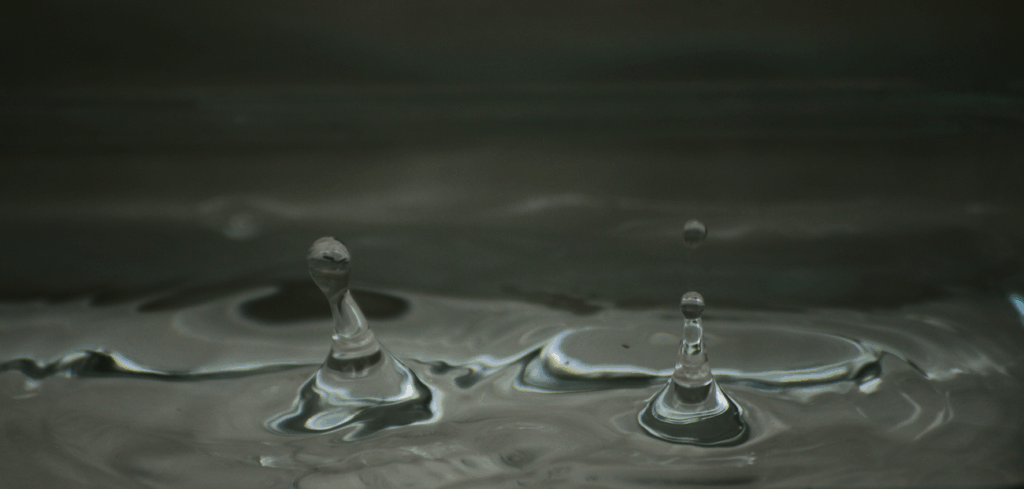My image shows the immediate aftermath of two water droplets hitting a still surface of water. We can see the subsequent jetting of water as the fluid rushes in to fill the “crater” formed by droplet impact.
Seth Dry
Categories
Flow Vis Guidebook
- Introduction to the Guidebook
- Overview 1: Phenomena. Why Does It Look Like That?
- Overview 2: Visualization Techniques
- Overview 3: Lighting
- Overview 4 - Photography A: Composition and Studio Workflow
- Overview 4 - Photography B: Cameras
- Overview 4 - Photography C: Lenses - Focal Length
- Overview 4 - Photography C: Lenses - Aperture and DOF
- Overview 4: Photography D: Exposure
- Overview 4 - Photography E - Resolution
- Overview 5 - Post-Processing
- Clouds 1: Names
- Clouds 2: Why Are There Clouds? Lift Mechanism 1: Instability
- Clouds 3: Skew - T and Instability
- Clouds 4: Clouds in Unstable Atmosphere
- Clouds 5: Lift Mechanism 2 - Orographics
- Clouds 6: Lift Mechanism 3 - Weather Systems
- Boundary Techniques - Introduction
- Dye Techniques 1 - Do Not Disturb
- Dye Techniques 2 - High Visibility
- Dye Techniques 3 - Light Emitting Fluids
- Refractive Index Techniques 1: Liquid Surfaces
- Refractive Index Techniques 2: Shadowgraphy and Schlieren
- Particles 1- Physics: Flow and Light
- Particles 2: Aerosols
- Particles 3: In Water
- Particles 4 -Dilute Particle Techniques
- Art and Science
- TOC and Zotpress test
- Photons, Wavelength and Color


4 Comments. Leave new
Hi Seth, I think this photo is a clear demonstration of how complex fluid flow is. One of the jet streams goes directly up, and the other is almost collapsing to the left; the fluid motion in this image is influenced by many different factors in each of the droplet locations.
Neutral Questions: What do you think about the symmetry between the two rising water jets? What made you decide to go with two jets rather than just one?
The addition of a second droplet allows for more complex fluids to be shown, specifically when the two cavities pull water from each other is quite beautiful.
Hi! I was in your breakout room and I really liked how you cropped the photo. You were able to center the fluid phenomenon to where it is and I feel like you were able to eliminate the distracting parts of the photo! I really thought that this photo looked cool so great job!